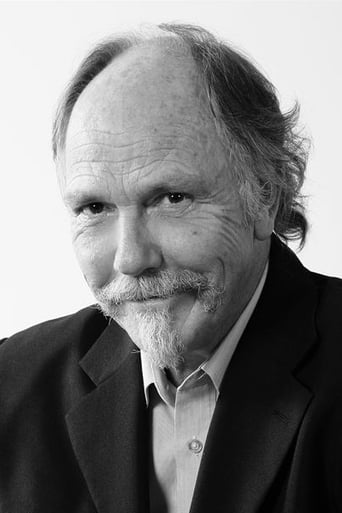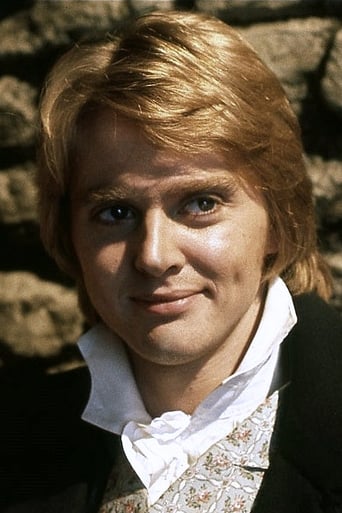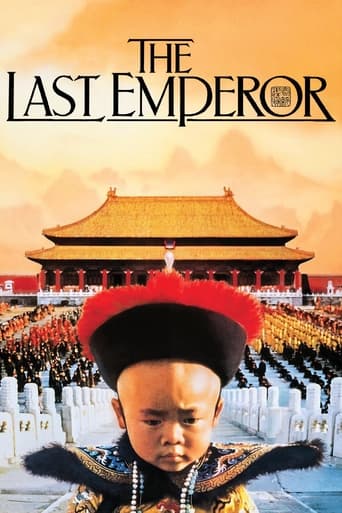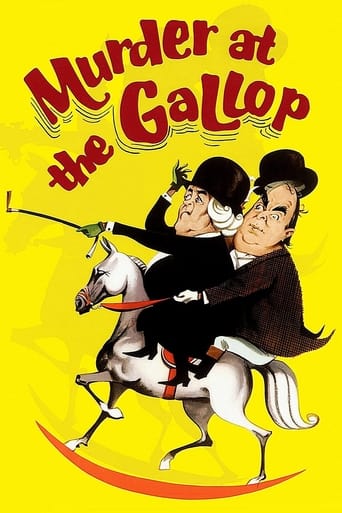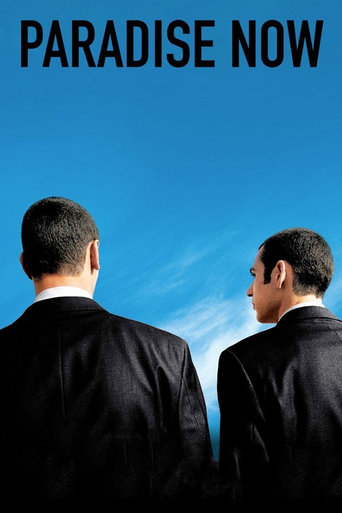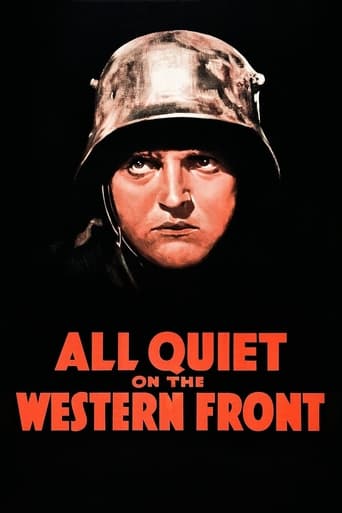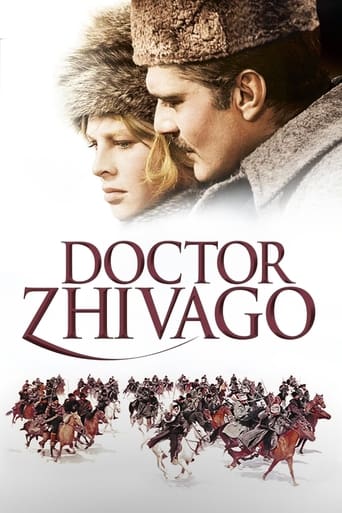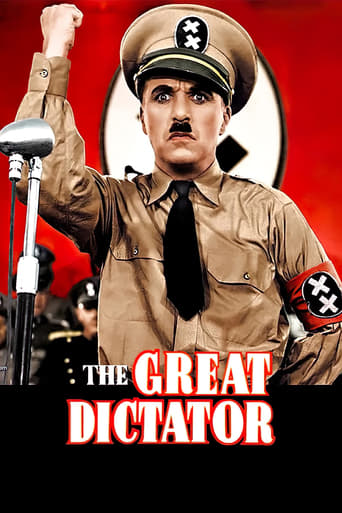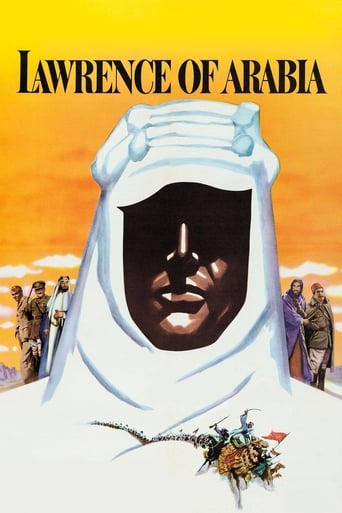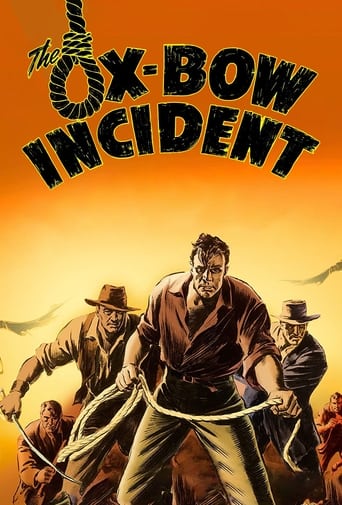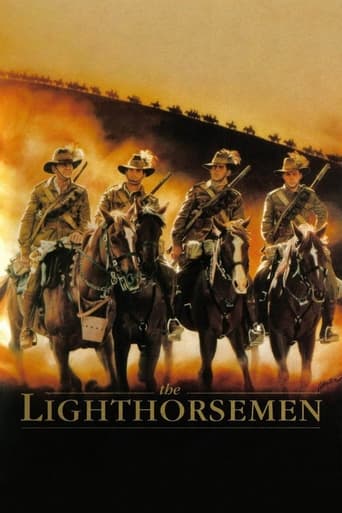
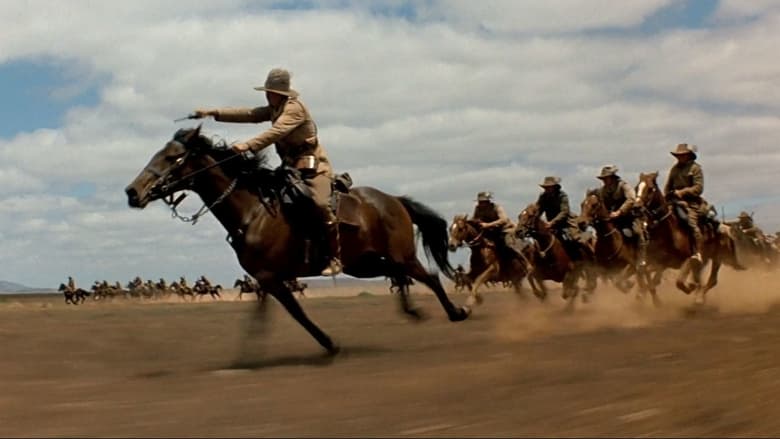
The Lighthorsemen (1988)
Palestine, 1917. The British advance has been stopped by the Turkish line running from Gaza to Beersheba. The latest attack on Gaza has failed. The attacking forces included a regiment of Australian mounted infantry, the Light Horse... Lighthorseman Frank is wounded in a skirmish with Bedouin. He is replaced by a young soldier, Dave, who proves to be a crack shot, but reluctant to fire at the enemy. Dave proves himself during a German biplane attack. Recuperating in hospital, he meets a sympathetic nurse, Anne... The regiment is called upon for a bold flanking attack on Beersheba. But how do you convince the Turks the main attack will come at Gaza? And how do you attack across a desert without water?
Watch Trailer
Cast
Similar titles
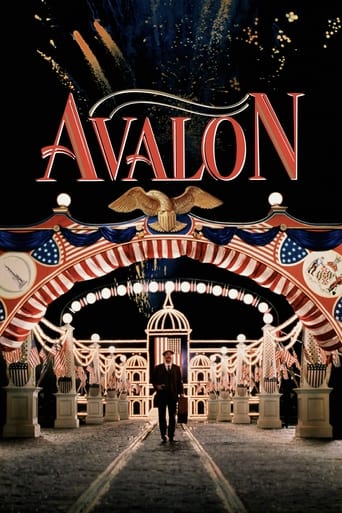
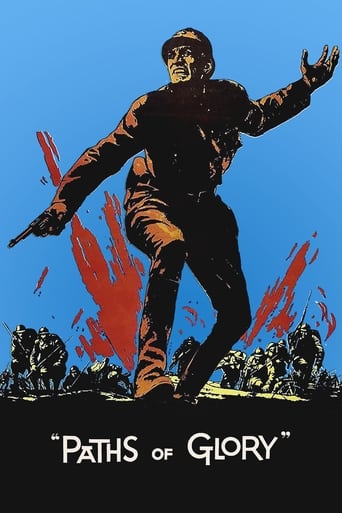
Reviews
Redundant and unnecessary.
Best movie of this year hands down!
The best films of this genre always show a path and provide a takeaway for being a better person.
It is neither dumb nor smart enough to be fun, and spends way too much time with its boring human characters.
Nineteen seventeen. Imagine a full-blown 20th-century war fought on horseback. I don't know exactly why this wasn't a more popular movie because it's pretty good. It's made for mature audiences in the sense that so many emotions and attitudes are left unspoken, just as they are in real life, their presence betrayed only by a glance or an expression.I have no idea what the budget looked like but the movie has characteristics associated with fully fledged feature films, not made-for-TV quickies. The camera catches the sweep of the desert, the impressive arched architecture of the Middle East, the isolation of the units, and the gradual integration of newcomers into sometimes hostile elite groups. I guess the wardrobe is accurate. A casual shot of someone's brown riding boots shows the extra patch of leather across the upper arch to protect against abrasion from the stirrups. Myriad extras.There's little in the way of back story except what emerges in everyday conversation, and there were times when I was lost while trying to keep the flow chart of command in mind. Perhaps it wouldn't be a problem for an Australian audience. At least at first, it was also difficult to keep the actors straight. It's an ensemble movie and a handful of characters are kept in focus while many others come and go. The identical uniforms are a kind of identity mask and the actors (who are all quite professional) are all handsome and fit young men with similar Aussie personalities -- cheerful, witty, somewhat embarrassed by sentiment, responsible, kinetic, and eager for a challenge, as if it were a sporting contest -- a horse race or a cricket match. I love the Aussies, having lived among them for a while. But this movie is one of those where some familiar Australian faces would be welcome, like Mel Gibson, Eric Bana, Russell Crowe, or -- especially -- Nicole Kidman or Naomi Watts, preferably out of uniform. Not to mention the immortal Chips Rafferty.When wounded during an air attack one of the men winds up in hospital, attended by a toothsome young nurse. My nurses never look like that. They all remind me of Miss Pavor de Grunt, my fifth grade algebra teacher. There are some amusing scenes. General Allenby arrives to take command. (Jack Hawkins was Allenby in "Lawrence of Arabia.") He and his staff are British. The Australians are subordinates. And the "Pommy bastards" strut around impeccably uniformed even at the rest camp. A British officer registers a complaint that the Aussies are wearing shorts. He knows this is a rest camp but after all. Moments later he's astonished to see men riding their horses bareback -- both man and horse -- through the gentle surf.There are scenes of combat scattered throughout the plot and a final heroic cavalry charge. The Turks, whom we tend to think of as indecisive warriors, give a good account of themselves and make the Allies pay dearly, although of course there is never any doubt about who are the good guys and the bad guys.The scenes on horseback are striking. There's nothing like horse in full stride, going like hell, while the horseman stands slightly in the stirrups and doesn't bounce an inch. Staying on a galloping horse requires experience. I once applied for a job as an extra in a cavalry charge in a movie dealing with the pursuit of Pancho Villa in Mexico. They turned me down when they learned how few horses could be seen in Newark, New Jersey.
The "Lighthorseman" works best when the troopers are in the saddle; when they dismount and start talking, the problems begin. No detail of equipment was overlooked in recreating the look of the Light Horse of the Great War, nor were any time-worn clichés from the previous fifty years of war movies.Few cinematic cavalry charges are better than the one at the end of this movie, but if you were hoping for history brought to life with the same depth and sensitivity as Peter Weir's "Gallipoli", this isn't that movie.The story focuses on a section of Light Horsemen: Dave, Scotty, Chiller and Tas played by Peter Phelps, Jon Blake, Tim McKenzie and John Walton. Tony Bonner as their commanding officer, Colonel Bourchier, gives one of the film's best performances as a no-nonsense officer who has earned the respect of his men.When the script deals with the by-play between the troopers the movie has a believable tone, but when it tries to set the scene in historical terms, it gets trickier.Everybody from stiff-backed German officers to stiff upper-lipped British ones, deliver chunks of laborious exposition, much of it speculation about whether the Light Horse will charge or just dismount and crawl through the sand under intense fire. A German officer, who makes the German officers in Errol Flynn's war movies appear as models of subtlety, comments on the Australians, "They are formidable soldiers but the British don't know how to use them". Forced dialogue such as this makes you appreciate how good Weir's "Gallipoli" really is.Dave Mitchell is the central character who finds he is unable to shoot the enemy. After being wounded, he meets Anne, a nurse played by Sigrid Thornton, who helps him come to terms with his problem. Although this is apparently based on a true story, the cinematic déjà vu is overwhelming. The shots of the Light Horse on the move are impressive and the final charge is exciting, but there could be a little too much use of the zoom lens in "The Lighthorsemen".Our visual knowledge of historic events is shaped by images such as the black and white photography from the last half of the 19th Century followed by film of varying quality through the first half of the 20th Century. Although the zoom lens had been around for about fifty years, it didn't come into it's own until the early 1960's when the problem of focus was solved. You don't see much use of the zoom in movies and documentaries up until then. Although filmmakers could claim they are bringing history to life in a modern and immediate way, I feel that a period film that uses the zoom extensively tends to distance itself from the look and feel of the times in which it is set. There is no noticeable use of the zoom in John Ford's cavalry trilogy; films that effortlessly capture the period in which they are set.In World War 1, The Australian Light Horse and the New Zealand Mounted Rifles comprised the British Army's main mobile strike arm in the Sinai and Palestine Campaign. Before tanks, these mounted troops were the British army's equivalent of the next war's Panzers, and Beersheba was their most spectacular Blitzkrieg. Despite the brashness, "The Lighthorsemen" goes some way towards giving these men, arguably Australia's greatest generation, some belated homage.
I have watched this movie at least five times. Initially, I was a little disappointed by the tedium of the first half of the movie. I began to realize, however, that the first half of the movie is a pretty good reflection of military life prior to the second half of the 20th century: long periods of boredom and routine punctuated by major confrontations.I've noticed that a few reviewers have remarked on the final "cavalry charge," which suggests to me that they really weren't paying much attention to the movie. The final charge on the Turkish positions is so much more awe-inspiring given the usual tactics of the Lighthorsemen. One of the most thrilling moments is when the Aussies prepare to meet the enemy on horseback and, instead of pulling out the classic cavalrymen's sabers, draw their bayonets for the charge. You almost want to laugh at the sight of 16" knives against the well-emplaced Turks.This is one of the few war movies based on actual events that is fairly accurate, too. Take a look at some of the sites dedicated to the 4th Light Horse Briagde and you will see what I mean. A letter from one of the actual participants to his brother is an almost perfect description of the events as shown in the movie.**** out of ***** if only for the charge
The "Charge of the Light Horse" has gone down in the annals of legend, as indeed of history. This, the definitive film of the event so far, is based on the true story of one couple's involvement in the events of the 1917 desert campaign. Like the earlier "Forty Thousand Horsemen" (1940), a very similar film in many respects, it leads up to the momentous charge on Beersheeba with style, tension and humour.It was partly a starring vehicle for the wonderfully charismatic action hero Jon Blake, whose sad incapacitation has robbed Australian cinema of one of its shining lights.The scene of the charge is superbly choreographed and filmed, and deserves to be right up there with the chariot race scene from Ben Hur.I cannot conceive of anything more scary than being on the wrong end of a cavalry charge, and this will have you out of your seat.I personally rate this as the best film (of any genre) I have ever seen.

